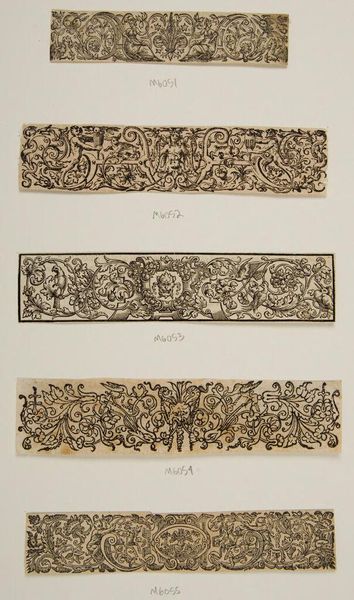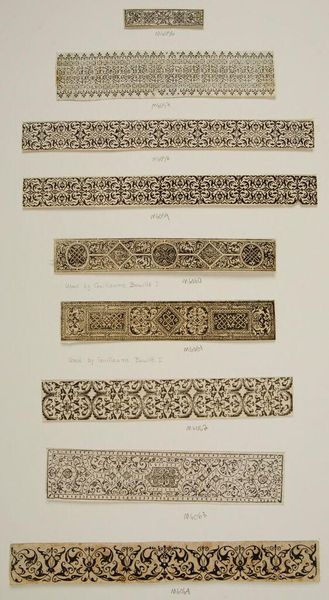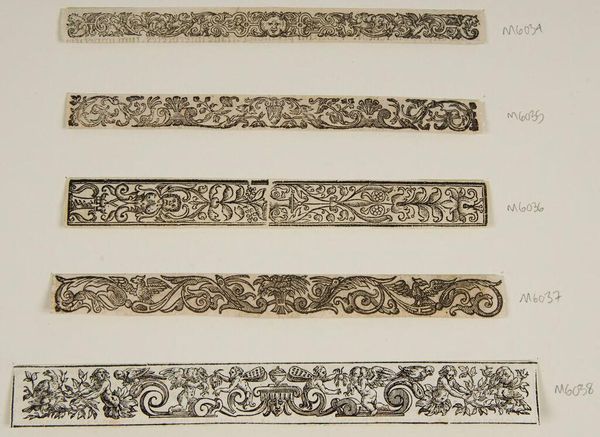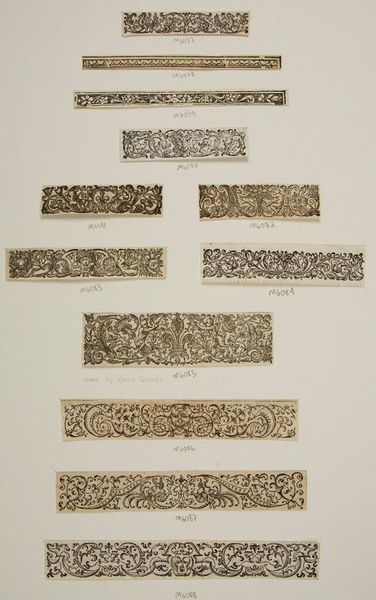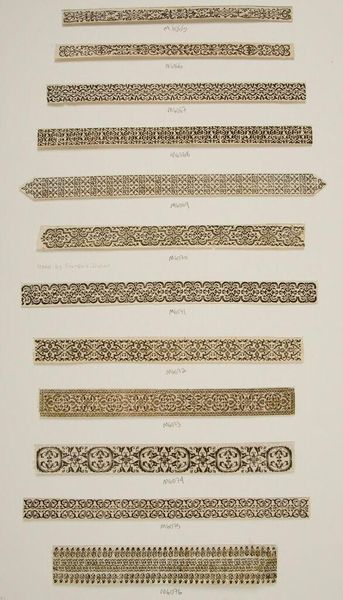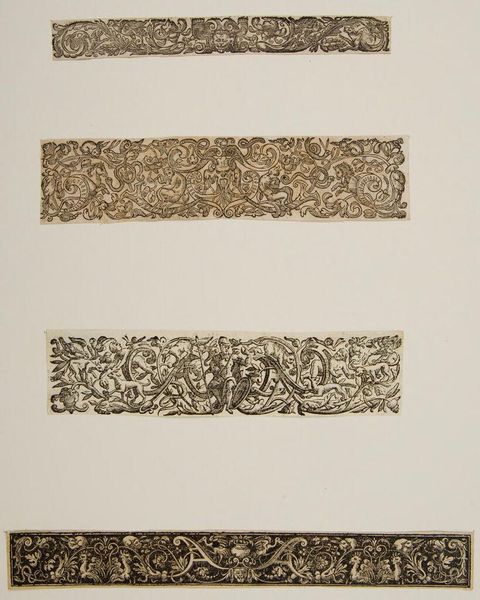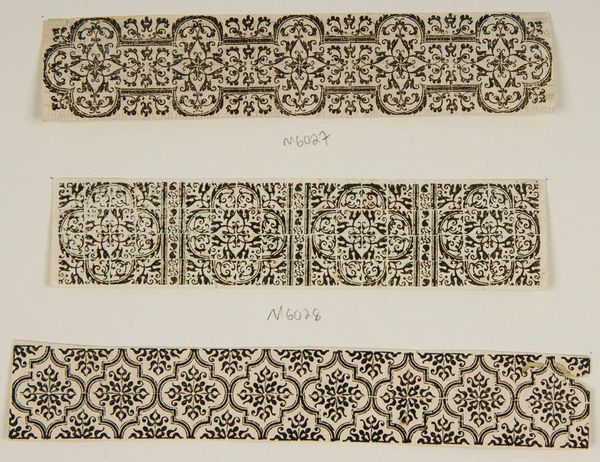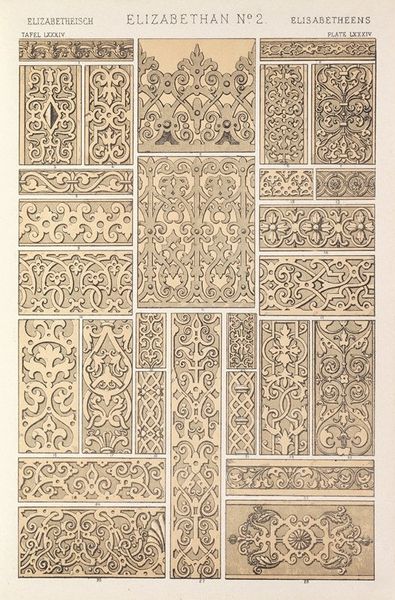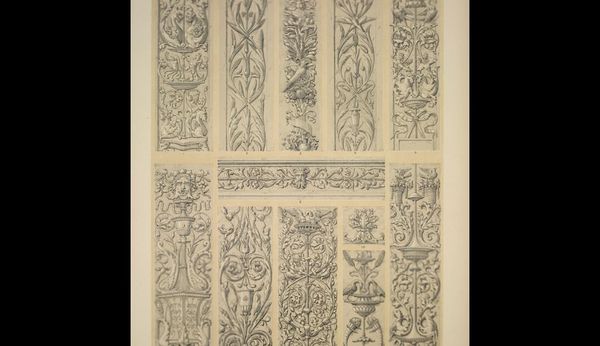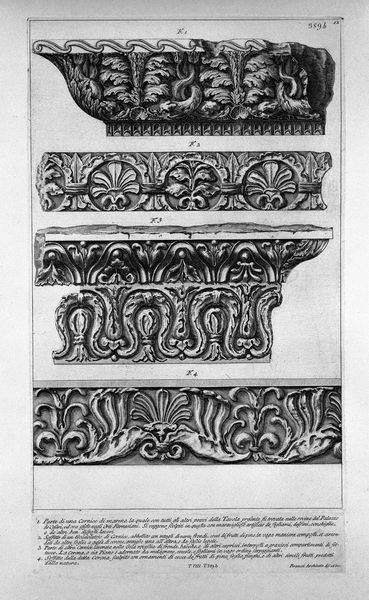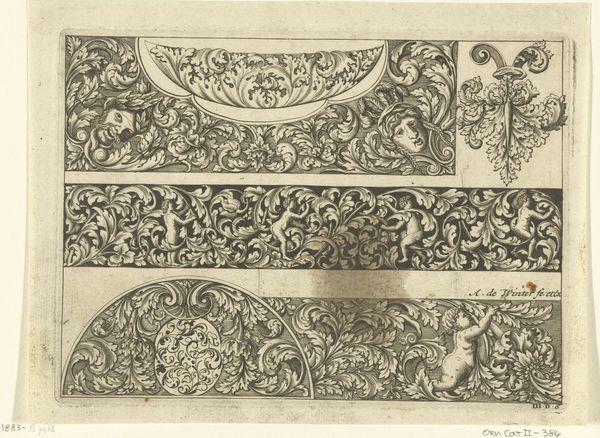
Copyright: CC0 1.0
Curator: At the Harvard Art Museums, we have a fascinating artwork titled "Border" by an anonymous artist. It presents several bands of intricate designs. They feel so dense and almost claustrophobic. Editor: Indeed, the composition’s density is striking. The interplay of line, the contrast of light and dark—it’s all quite captivating. How do these borders reflect the social climate of their time? Curator: Given that the artist remains unknown, pinpointing the social climate is challenging. However, considering their ornate nature, we might explore the role of decoration and marginalization in the production of art. Are these borders purely decorative, or do they serve a more subversive purpose? Editor: I am drawn to their semiotic potential. Each motif—the leaves, the faces—contributes to a larger narrative, a system of symbols that we can analyze and interpret through structuralism. Curator: Precisely! These motifs may reveal societal values, hierarchies, and even resistance to dominant norms. It invites us to consider the art and its impact. Editor: A powerful demonstration of how close visual analysis can meet social critique.
Comments
No comments
Be the first to comment and join the conversation on the ultimate creative platform.
